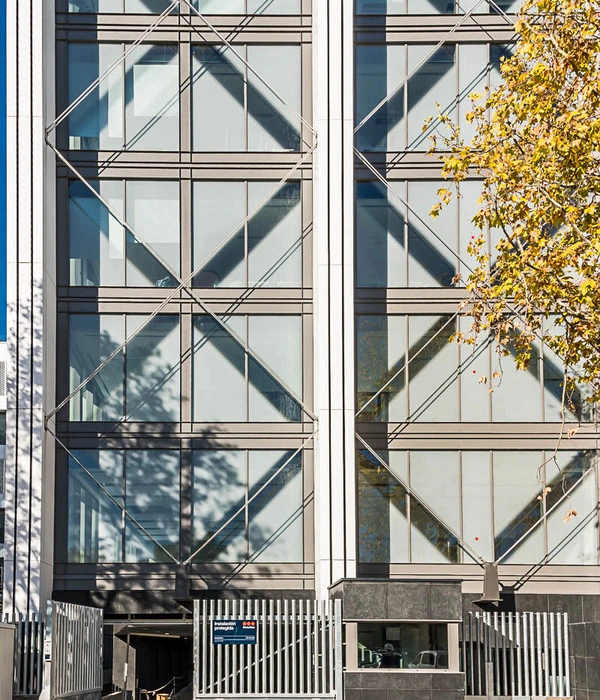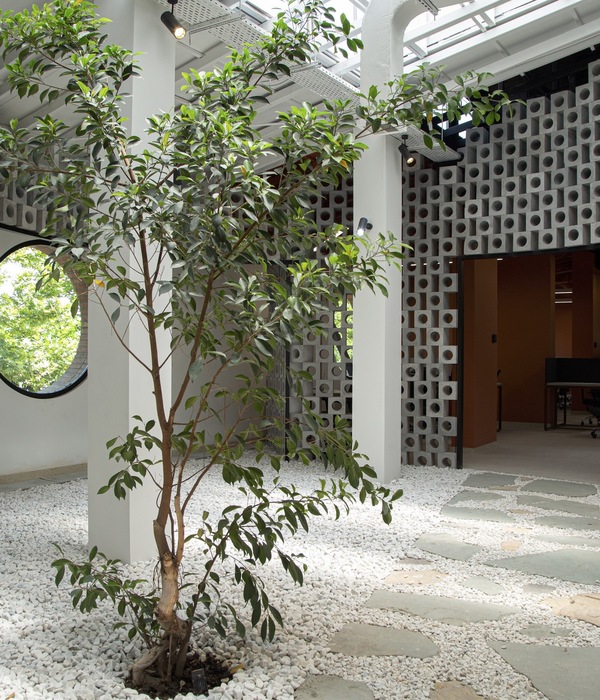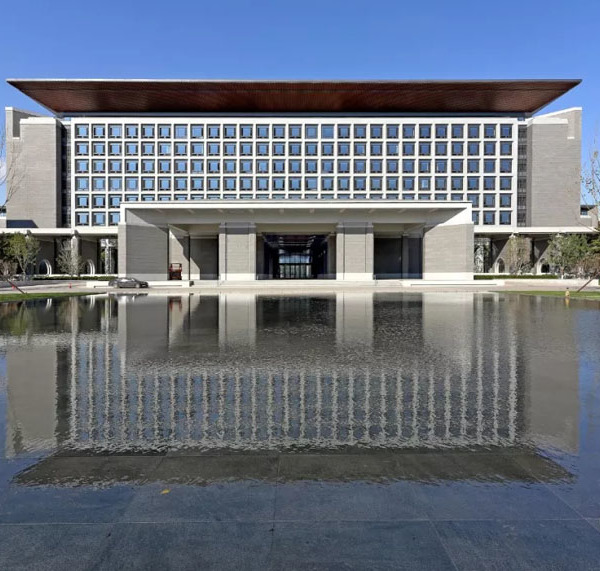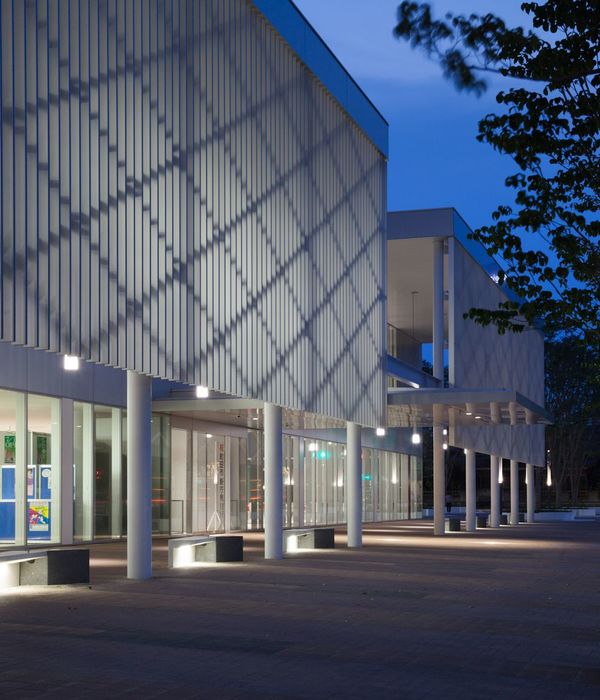"该项目通过简单、直接的方式解决了一个复杂的问题"。
— ASLA评奖委员会
"A simple, straightforward approach to a complex problem".
— 2017 Awards Jury
Reed Hilderbrand LLC Landscape Architecture
项目概述
PROJECT STATEMENT
该项目位于智利偏远的巴塔哥尼亚峡湾,是750,000英亩的Parco Nacional Corcovado境内的一个占地570英亩的私有区域。区域内可以俯瞰到Tic-Toc海洋公园,该公园是地球上最具生物多样性和生产力的海洋生态系统之一。由于该项目位于智利保护区体系当中,因此,此次委托为国家公园和私有场地的衔接提供了一个实现积极改造的机会。该项目强调敏感性干预措施的使用,以确保稳固应对来自外界的不断变化的生态威胁。因此,在规划方案中,提出了一个适应当地具体技能和保护能力的修复理论,并依此对受损或受到威胁的生态系统进行管理,以促进最低限度的人为干预。另外,设计团队还认为,有必要控制敏感景观的获取和占用,以便更好地了解,欣赏和保护它们。这些对保护原始、偏远的荒野所做的努力,构成了这个项目中管理模式的原型。
Tucked into Chile’s remote Patagonian fjords, the project area is a privately-held 570-acre promontory within Chile’s 750,000-acre Parque Nacional Corcovado. The site overlooks Tic-Toc Marine Park, one of the most bio-diverse and productive marine ecosystems on Earth. Situated between these critical components of Chile’s conservation network, the commission represents an opportunity for landscape architecture to effect positive change at the intersection of national park traditions and individual stewardship. This project addresses a requirement for sensitive intervention to stabilize conditions threatened by a changing world. The resulting plan proposes a conservation ethic tuned to specific local skills and capacities, advances minimal human intervention as a mode to manage damaged or threatened ecosystems, and foregrounds a belief that controlled access to and occupation of sensitive landscapes are necessary to know, appreciate, and preserve them. These efforts to protect a pristine, remote wilderness site also result in a prototype stewardship model.
边缘保护对巴塔哥尼亚荒野进行低干预保护的原型CONSERVATION AT THE EDGEPrototyping low-intervention conservation in the Patagonian wilderness
项目说明PROJECT NARRATIVE
目的
了解和进入场地的框架
经验收获
从这些信息中,景观设计师明确了底层地形、水文以及相应的栖息地特征之间的关系。一系列的分析和推测性规划图使设计师能够了解到当代景观模式与相应的生态退化地区之间的关系。例如,因受二十世纪伐木作业的影响,这个半岛上的一些关键原生植物惨遭破坏。 另外,设计师还观察到,由于欧洲移民进入智利,导致一些外来物种的入侵,特别是沙凯(Chacay),如今已经占领了大片森林和海洋之间边缘地带的开放区域。
基于对场地的经验性和分析性相结合的综合理解,设计师制定出了一套针对生态环境改善的策略,并包含了适合人类进入该场地的景观设计。扩大探访途径被认为对该场地有积极影响,这样不仅可以满足专业人员和游客更深入地观察和了解Tic Toc海洋公园,同时方便获得探访、了解和管理方面的反馈信息。
可持续操作
Chacay是一个不耐阴的入侵物种,其过度繁殖已经超过了可控范围,并威胁到了本土乔、灌木的生长,如果不加以处理,或将涉及到建筑用地区域。场地内所有的成年Chacay已经被去除,幼苗也正在呼吁被随手拔出,否则随着时间的推移,它们将会占领这个区域。Chacay在没有阳光滋养的情况下对当地物种不具威胁。丢弃的Chacay高度易燃,因此在附近的民居被烧毁了。所有这些操作都可以用最少的工具和现场材料来完成,例如,既可以使用拖拉机进行大型清理,也可以使用普通链锯或手动工具清理。而所有这些干预措施都会根据重要的生态参数进行核查,比如花粉传播的影响、鸟类多样性以及对野火的恢复力。
对于现场施工材料,设计团队仅使用了现场可以发现的,或对之前的材料进行了重新利用,包括疏林过程中砍掉的树木,场地收集的植物,以及各种土壤、沙子和岩石。通过这种方式,设计师在场地内补充了一些小径、木栈道和有限的基础设施。这些简单的方式和方法,确保了在这样的偏远地区,一些优先处理事项和即兴创作得以实施。
意义原型
这个景观框架的意图在于建立一个生态干预的原型,涉及(1)低技术含量(能够凭借当地劳动力而不需要输入专业知识),(2)可拓展(可以通过在当地社区进行学习,陆续对其进行完善 )(3)一体化(包括恢复以前的状况,并且通过消除导致生态系统失调的因素,重新对当地生态系统进行调整和管理)。
荒野的未来
实施Tic-Toc海洋公园的保护工作是一位有远见的、致力于推动保护智利巴塔哥尼亚公园发展的私人业主努力的结果。该业主抓住了这个难得的场地复原机会,把土地恢复到了完全健康的状态,并使它成为了了解同类型敏感景观复原工作的范例,希望是在全球范围内。该业主试图建立由一个科学家,艺术家和有意参与到这个偏远、敏感场地上的人参与的研究项目,通过研究学习,在将来能展示出一些荒野保护项目。
▲受保护的智利巴塔哥尼亚荒野由于智利境内拥有一个由24个国家公园构成的生态网络,因此其20%的国土都在保护区范围内。
PRESERVING WILDERNESS IN PATAGONIA, CHILE
With a network of 24 national parks throughout the country, 20% of Chile’s land is reserved for conservation.
▲场地鸟瞰在这个600英亩且包含了多样栖息地类型和复杂自然环境的场地内,容易到达的区域却很少。 研究小组希望通过退潮期的航拍照片,能够评估出场地内的原始空间状况。
AERIAL OBERSVATIONThe easily-accessible portion of the site represents only a small fraction of the diverse array of habitats and environments comprising the site’s 600 acres. Observing from above during lunar low tide, the team was able to assess initial spatial observations made from aerial photographs.
▲地貌真相该小组与当地生态学家合作,清晰呈现出了场地模式和生态系统的原始面貌。而这些基于经验和生态条件的场地理解都源自于场地分析和地貌观测。
GROUND TRUTHINGThe team worked with a local ecologist to clarify initial observations of patterns and ecosystems found on site. An understanding of both experiential and ecological conditions grew from feedback between analysis and on the ground observations.
▲勘探设计团队利用GoPro和基本定位工具对一个具有复杂横断面的场地进行了测绘,以便更详细地了解其场地情况和生态条件。
EXPLORATIONEquipped with a GoPro and basic mapping tools, the design team hiked a transect through a structurally diverse segment of the site to better understand patterns and typical ecological conditions.
▲水文地形动力学场地的水文坡度是根据地形数据推断出来的。流量分析软件则反应出了该场地的相对高点和低点,以及永久性洪涝区。由于水文地图中结合了场地内观测到的潮汐变化范围,和之前的航拍图片分析结果,因此为栖息地的预测提供了足够的信息。DYNAMICS OF HYDROLOGY AND TOPOGRAPHYThe site’s hydrologic gradient was inferred from topographic data. Flow analysis software revealed the site’s relative highs and lows as well as the basins where soils are permanently flooded. Combined with the tidal range mapped from site observations, the hydrologic map provided sufficient information to predict habitat assemblies once combined with an analysis of the aerial imagery.
▲栖息地和其中的机会有关区域性栖息地的结构和功能的学术论文显示,在Valdivian温带雨林的低洼地区的发现与当地水文、及受林冠层变化而引发的日照变化有直接联系。因此,利用森林冠层的有无和个别树木的体量可以确定斑块边界,而将植被斑块与水文地图叠加,也会使特定的栖息在场地内更容易识别。
HABITATS AND THEIR OPPORTUNITIESA survey of academic papers on the structure and function of regional habitats revealed that those found in the low-lying portions of the Valdivian Temperate Rainforest are directly tied to local hydrology and the presence of a forest canopy in lieu of significant topography to alter solar exposure.Therefore, using the presence or absence of a forest canopy and the relative size of the individual trees to determine patch boundaries, it was possible to overlay vegetation patches with the hydrological map in order to identify specific habitats across the site.
了解和探访—管理职责和方法模式现场干预的基本原则是对既有场地条件保持敏感性,并可以通过简单的工具、材料和方法拟定低影响解决方案。这种管理模式旨在概括出了管理工作的潜在范围,而不是定义出明确的空间规划范围。其中每项措施都希望可以改善生态系统的健康状况,同时增加内部可达性。KNOWING AND ACCESSING – A FRAMEWORK FOR STEWARDSHIP AND MANAGEMENTInterventions in the site are driven by a sensitivity to existing conditions and the necessity for low-impact solutions that can be carried out with simple tools, materials, and methods. The stewardship operations outlined here indicate potential zones rather than a definitive spatial plan. Each operations aims to improve ecological health while also increasing accessibility.
▲观察 — 单一种群超过了沙地物种OBSERVATION – MONOCULTURE OVERTAKING DUNE SPECIES
▲干预 — 重新建立对外开放边缘地带INTERVENTION – RE-ESTABLISH THE OPEN EDGE
观察 — 森林和灌木增长不平衡OBSERVATION – IMBALANCE OF FOREST AND SHRUBLAND GROWTH
▲干预 — 物种多样性和人员可进入性较低INTERVENTION – THIN FOR DIVERSITY AND ACCESS
观察 – 沼泽是濒危物种的栖息地OBSERVATION – BOGS ARE NURSERIES FOR ENDANGERED SPECIES
干预 — 复原柏树沼泽INTERVENTION – REHABILITATE CYPRESS BOG
▲保护管理模式A MODEL FOR CONSERVATION STEWARDSHIP
PROJECT NARRATIVEPurpose
The health of intact wilderness is society’s collective responsibility. This project addresses the challenge of conserving wilderness in the era of globalism and climate change. The purpose of this planning project has been (1) to assess the situation, (2) to create a plan to restore, enhance and protect a fragile site, (3) to devise a process of research and analysis that can be deployed by others in similarly sensitive situations, and (4) to advise on the creation of a facility that can be used as a research base.
A framework for knowing and accessing
To visit Tic-Toc is to return to a moment much earlier in our history, when humans encountered the tides, the winds, and the rugged, dangerous beauty of remote land. The promises of modern infrastructure cannot apply in this secret corner of the world, one of its last pristine wildernesses. This project pursues a tightly contained scope of human intervention. The landscape architect leverages deep appreciation of Tic-Toc’s dramatic landscape to renew and protect rare ecological systems that define the site’s unique character. By increasing structural diversity within Tic-Toc’s forest, for example, we pre-empt risks of wildfire within the untouched Valdivian Temperate Rainforest. Such proposed operations are highly tailored to local patterns and the capacities of local crafts people, however the underlying strategies make the framework an effective model for intervening in remote sensitive areas held in private conservation.
Drawn from experience
No detailed survey information exists for Tic-Toc. An impenetrably dense forest covers most of the property. To assess site features, the landscape architect appropriated field biology techniques. Traveling on foot, the landscape architect completed a series of transects across the varied topography and ecological conditions of the site. This augmented a visual survey of the property’s more open edge. We acquired coarse geospatial data as well as narrative knowledge from a local ecologist who is also the founder of the Melimoyu Foundation (the conservation group that created Tic-Toc Marine Park).
From this information the landscape architect identified relationships between underlying topographic and hydrological dynamics and ensuing habitat character. A series of analytical sections and conjectural plan diagrams allowed us to recognize relationships between contemporary landscape patterns and areas of relative ecological degradation with areas which had been impacted by earthly twentieth-century logging operations, which stripped areas of this peninsula of some key native plants. In addition, we observed the encroachment of invasive species, notably Chacay, introduced to Chile by European settlers, taking over open areas particularly at the edges between forest and ocean.
Through a paired experiential and analytical understanding of these patterns, we developed a series of strategies to improve ecological health and provide for appropriate levels and types of human access. This approach posits that expanded site access is a positive impact, allowing for further observation and understanding and creating a feedback loop linking access, knowing, and stewardship.
Operating sustainably
The site contains a rich variety of habitats: beach, dune, wetland, intertidal, forest, shrubland, sphagnum and Guaitecas bogs. Not surprisingly these contain a wide variety of flora and fauna. Some areas require preservation, others restoration, and yet others, at risk from potential impacts of climate change, need reinforcement and increased resiliency. The process of detailed site analysis resulted in the identification of four key areas of intervention: (1) clearing invasive species like Chacay and restoring the dunes; (2) selective thinning of trees on the wooded promontory to diversify stand age and species while reducing dead/combustible undergrowth, all to improve health and increase the forest’s resiliency; (3) nurturing the bog area by re-establishing the nurse canopy for the Guaitecas cypress and preventing damage to the critical sphagnum moss during harvesting; and (4) restoring the fragile forest/ocean interface through attention to the salt-tolerant grasses and health of the wetlands and dunes in the tidal zone.
A major focus falls on the control of Chacay, a shade-intolerant invasive species which has overgrown the stabilized zone, out-competing the native trees and shrubs that would otherwise colonize the built-up soils. All mature Chacay plants have been removed, seedlings are lifted by hand so that over time, as native species recolonize the area, Chacay will be starved of the sunlight it needs and will fail to out compete the native species. Discarded Chacay is highly flammable and is burned in the nearby local residents’ wood stoves. All of these operations can be achieved with minimal tools and mostly on-
{{item.text_origin}}












